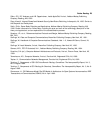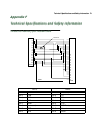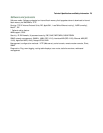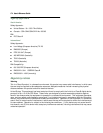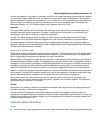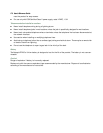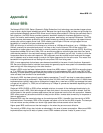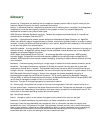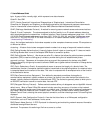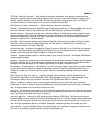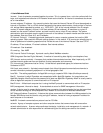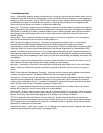About SDSL G-1
AA
AA
pp
pp
pp
pp
ee
ee
nn
nn
dd
dd
ii
ii
xx
xx
GG
GG
AA
AA
bb
bb
oo
oo
uu
uu
tt
tt
SS
SS
DD
DD
SS
SS
LL
LL
The Netopia R7200 SDSL Router (Symmetric Digital Subscriber Line) technology uses standard copper phone
lines to send a digital signal between two points. Because the signal stays digital and does not go through the
public switched telephone network SDSL allows a much faster data connection. Offering the same data rate in
both directions, the SDSL Router provides symmetric bandwidth needed for business applications such as
e-mail, file transfer, web browsing, corporate Intranet access, web hosting, and remote LAN access. The SDSL
Router improves businesses productivity and competitiveness by providing cost effective, high speed Internet
access over ordinary copper phone lines. SDSL creates a point-to-point link over a single copper wire so
bandwidth isn't shared by anyone outside the remote office.
SDSL will allow you to connect to the Internet at a minimum of 128Kbps bi-directional, up to 1.568Mbps. Your
LAN will constantly be connected and you will not have to dial into the Internet. DSL utilizes more of the
bandwidth on copper phone lines than what is currently used for plain old telephone service (POTS). By utilizing
frequencies between 26 kHz and 1MHz, DSL can encode more data to achieve higher data rates than would
otherwise be possible in the restricted frequency range of a POTS network (up to 4 kHz). In order to utilize the
frequencies above the voice audio spectrum, DSL equipment must be installed on both ends and the copper
wire in between must be clean enough to sustain the higher frequencies for the entire route. This means that
bandwidth limiting devices such as loading coils can prevent DSL from being used.
SDSL is more appropriate for business users because bandwidth is the same in both directions. Asymmetric
DSL Service is better suited for individual consumers who generally require more speed in the download stream
(web surfing) with little data going in the other direction.
Netopia's SDSL router has fewer implementation issues than ADSL routers. It uses 2B1Q line encoding (same
as T1 or ISDN) and this doesn't produce the same noise and interference as ADSL, which uses DMT or CAP
encoding. In some cases the phone company may refuse to provision ADSL service due to crosstalk with other
voice and data lines bundled in the same cable.
Historically, HDSL has been primarily used to deploy repeaterless T1 and E1 services in areas where repeater
installation was costly or problematic. Today there are over 300,000 such lines installed in the U.S. While these
implementations typically require two or three pairs of copper wire, a new form of HDSL has emerged that uses
a single pair of copper (i.e., SDSL) but still delivers up to 2 Mbps of symmetrical bandwidth depending on loop
length and quality.
Single pair HDSL (S-HDSL or SDSL) offers workable solutions to several of the challenges faced today by its
less mature cousin, ADSL. Both technologies will have their place in the service provider's network, and that
will be based on the specific customer applications that are supported over the last mile connection. However,
SDSL offers some very attractive solutions to today's main drivers—remote data connectivity for corporate or
Internet applications.
Because SDSL uses the same technology as the market-proven HDSL, it benefits from the maturity of HDSL
implementations. For example, SDSL silicon chipsets cost about a third of that for ADSL chipsets. The lower per
line cost means service providers can launch high speed data services sooner rather than later.
Higher speed ADSL solutions can then be brought on line when they are more cost effective.
The maturity of SDSL silicon also includes an advantage in the area of power consumption. Where most ADSL
implementations require 6-8 watts of power, current SDSL modems consume 4 watts of power or less.



